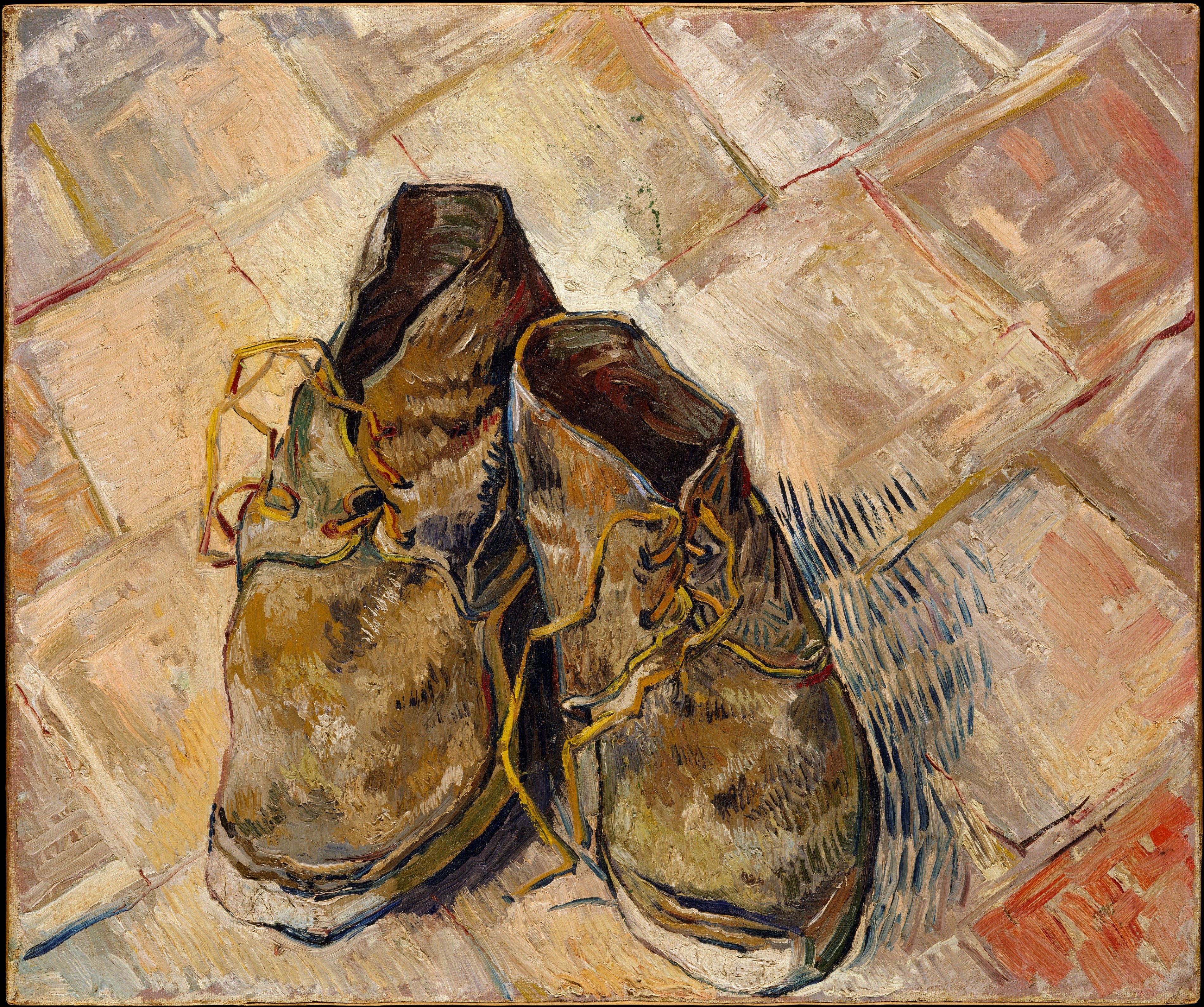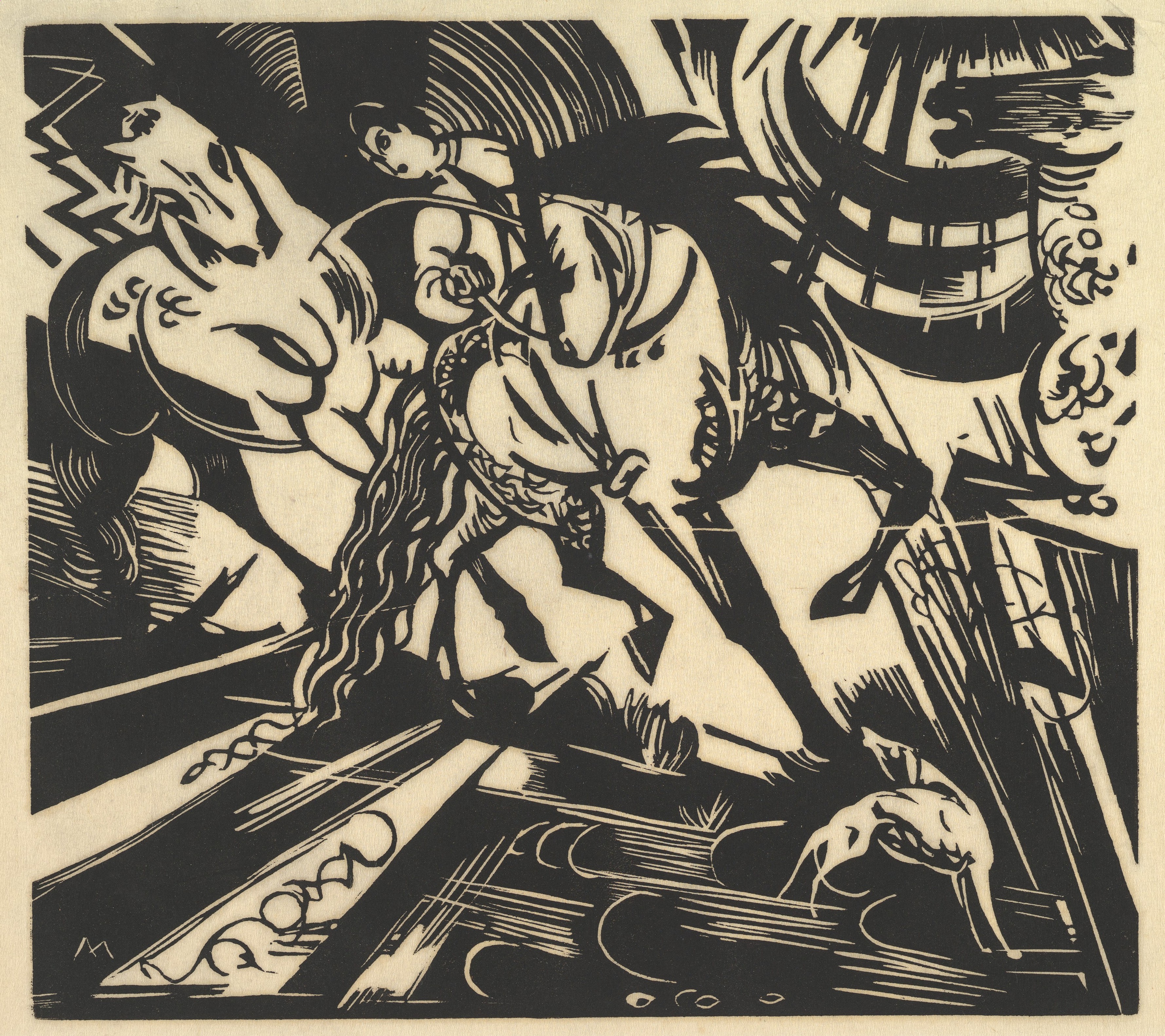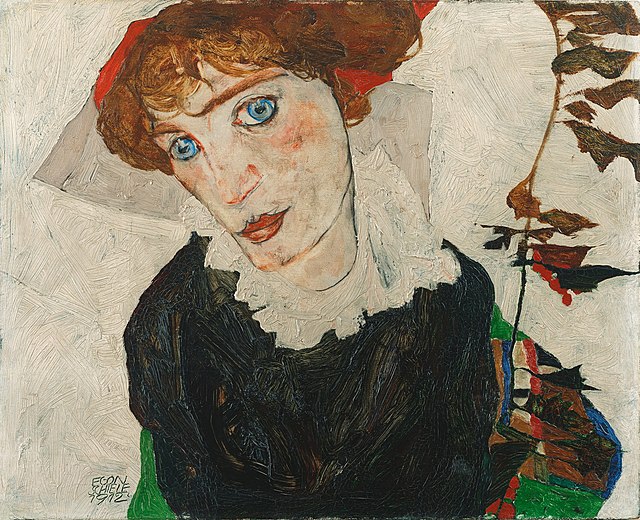The Birth of Expressionism and How it Affects Our Lives Today
Ale Castillo
Abstract:
In the early 20th century, German painters utilized expressionism as a technique within the avant-garde movement to vividly depict extreme emotional behavior in their artwork. Expressionists, as opposed to impressionists, communicated their emotions by utilizing vivid colors and unique shapes created through energetic brushstrokes. Following the end of the First World War, many expressionist artists underwent intense psychological distress and anxiety, leading to depression or suicide for certain individuals. Despite these challenges, the style continues to have a significant impact on artists and art movements, shaping our present understanding and production of art. The emotional intensity depicted in expressionist artwork has a great impact on a diverse range of cultures, and encourages people to observe the world from a unique and intellectually fascinating perspective. I describe how expressionism provide(s)d artists then and today with a powerful means of efficiently conveying their profound feelings and thoughts, often directly addressing societal issues in their artistic creations.
Keywords:
Expressionism, contemporary life, emotion, self-expression , turmoil
How to Cite this Paper: Castillo, Ale. 2024. “The Birth of Expressionism and How it Affects Our Lives Today.” CUNY Manifold, June 2024. https://cuny.manifoldapp.org/read/alejandra-castillo-the-birth-of-expressionism-and-how-it-affects-our-lives-today/section/4d4130c9-9567-482f-9051-6a4431945c3b
During the avant-garde movement in Germany in the early 20th century, artists used expressionism to vividly depict extreme emotional behavior in their paintings. Paul Vogt and Ita Heienze-Greenberg's article "Expressionism" describes the movement as "fine art developed by the symbolic and expressive trends in European art at the end of the 19th century." In response to impressionism, expressionists expressed their emotions through deep, bright colors and unnatural shapes created with rough brushwork. The practices of impulsiveness, a range of texture, and self-expression are commonly used to describe many contemporary art styles worldwide. Expressionism first became famous in Germany, expanding through different countries for decades after the First World War. According to Voght, “The roots of expressionism lay in international development in the late 19th century, though German expressionism always emphasized their independence from every foreign influence. Crucial impulses came from Norway, the Netherlands, and Belgium, countries with, like Germany, that old tradition of expressing art.” The Germans had to force art to be a spiritual energy; they saw it as a natural, extremely personal, and impulsive expression. The birth of expressionism happened during a time of significant social and cultural turmoil. Painters started to argue with the tradition, ritual, and custom norm of painting, seeking new opportunities to express their emotions.

Expressionist poster for the exhibition for the artists' group "Die Brücke" at the Arnold Gallery Dresden by Ernst Ludwig Kirchner, 1910. Public Domain.
According to an article in Queen's Quarterly, “the increasingly nationalistic debates pertaining to art signified the end of the utopian cultural exchanges that characterized the first decade of the twentieth century. The cafés of Montmartre and Montparnasse continued to welcome painters, sculptors, novelists, poets, and students from around the world in an atmosphere of great cultural and social liberty, often in vivid contrast to their homelands.'' Expression artists began to represent their inner behavior, communicating it through their artwork, whether it be their emotional state, attitude, thoughts, feelings, or desires. Their art was one-of-a-kind; many other artists defined it. The ability to affect their self-discovery through their art, through sculpture and paint sketching, was an incredible medium in which the artists expressed their emotions through their paintings. It was a release of anxiety, pain, and worries that the artist was carrying inside. It was one of humanity's earliest means of self-expression.

Van Gogh, Shoes, 1888. Public Domain.
Expressionism had a significant impact on artists, manifesting itself frequently in canvas, music, poems, film, and literature. Ita Heienze-Greenberg writes, “in order to communicate the human spiritual condition, the expressionists made use of new strong, assertive forms, often violent, distorted, symbolic colors, and suggestive lines. Their work also shows an interest in primitivism.” The artist achieves the painting through changes and exaggerations of reality. For example, landscape paintings or portraits became dramatic expressions of the painter's feelings. Expressionist art is about the artist's point of view and belief, the qualities of fear, and strange or easy-to-celebrate creations with deep imagination. The artist separates from the exact picture of creation to express a more personal perspective or state of mind. Ernst Ludwig Kirchner (1880–1938) and a group of other painters opposed what they saw as the limitations of realism and impressionism. These German artists used modern materials and bold visual techniques, employing deep lines, rough and fast brush strokes, and harsh colors to depict scenes of local streets and society. According to the article Impressionism to Expressionism by Queen's Quarterly, “the emergence of expressionism should be considered within the social and political climate in which artists were highly aware of an international avant-garde." Thus, the movement and its exhibitions are a reflection of the reception of Cezanne, Gauguin, and Van Gogh, the neo-impressionist Signac, the Fauves with Matisse, and the cubism with Picasso about the German expressionist artists of Die Brücke (the Bridge) and Der Blaue (the Blue Rider). They mimicked their predecessors vibrant, naturalistic colors to freely express their own deep emotions, setting it apart from other art styles that focus on depicting the physical world.

Franz Marc, The Riding School, 1913. Public Domain.
While there are some common approaches within the group of expressionist painters, each artist infuses their work with their own personal touch. Their themes expressed the human condition under extreme stress before the outbreak of the First World War. Such psychologically intense subjects demanded a painting of extraordinary communicative force. The Berlin works document the mature expressionism of Die Brucke at its most intense. Even after the group’s dissolution in 1913, Kirchner continued to produce some of the most potent Expressionism paintings, such as the self-portrait of the The Drinker or Absinthe from 1915.

Ernst Ludwig Kirchner, Der Trinker, 1915. Public Domain.
While the various techniques offer glimpses into their expressionist design, the painter's distinct style truly animates the art. According to the article by Jules Morgan, “Henry Matisse had neither the time nor the inclination for boredom. Over the course of six decades, he worked obsessively and consistently, progressing from the expressive realism of post-impressionism. Instinct, memory, and passion guided his work. It conveys emotion through the arrangement of colors and form.'' The emotions conveyed by artists are often specific and focused on the subject matter, allowing viewers to experience the same feelings. The use of energetic brushwork, vibrant colors, and rough textures serves to convey the artist's emotions and connect with the audience. Artists are able to express and release the stress and anxiety they may be feeling through their art, ultimately finding comfort and peace. This process not only helps to alleviate emotional and mental strain but also has the potential to reduce the risk of physical health issues such as heart attacks and strokes. Additionally, engaging in artistic expression can help individuals regulate their emotions and achieve a sense of stability and calmness. Expressionism was a pivotal movement that originated in Germany, with artists pioneering new ideas and genres that captivated the interest of other nations. Emotion served as the foundation for expressionist art, as artists sought to authentically convey their feelings in their work. According to the article “Expressionism” by Paul Vogt, “although expressionism particularly flourished in Germany, significant developments occurred in European countries. The principal Austrian Expressionists were Schiele and Kokoschka, who produced powerful Expressionist portraits, including some drawn for Der Sturm.

Egon Shiele, Deutsch: Bildnis Wally Neuzil Portrait of Wally Neuzil, 1912. Public Domain.
Other influential work was done even before 1908. Richard Gerstyl, whom Arnold Schoenberg influenced, views the interpretation of the world as it feels instead of how it looks, making a difference in what they see but creating art according to the emotion at the moment. They stimulate their painting with genuine and expressive strength, which helps them find new depths in their thinking. They refuse the ruling expressive agreement, and topics matter from the German point of view in the 20th century. Instead, they focus on the bold colors inward, looking at the arts of the 1880s against impressionism. Numerous expressionists also found early inspiration in the new art moment's plane design and fearless form. Expressionist art was constantly seen in museums and world fairs, where they encountered many African and Oceanic paintings. Representation is a typical attitude of the time. They also perceive non-Western art as primitive and, consequently, near the beginning of humanity. The expressions also had linear and decorative forms. They embraced printmaking as a way to quickly distribute work to enormous viewers as a significant means of advancing or judgmental social or governmental motives. According to the article about Cubo-Expressionism by Karel Srp, “Expressionism also had a powerful effect in literature, and many important writers were associated with group plastic artists. Their collection of stories vividly caught the predicament of the individual tossed by personal uncertainty regarding his true identity.” This renaissance period witnessed a resurgence in the advancement of music, literature, and philosophy, all of which deeply resonated with the human spirit.

Richard Gerstl, Self-portrait (1908). Österreichische Galerie Belvedere, Vienna. Public Domain.
Challenging and painful experiences artists face often drive them to create. This inspiration leads them to convey their emotions through their art, sending a powerful message to those who view it. Since the early days of expressionism, artists have used their creative talents to inspire others. Unfortunately, the Nazi regime's takeover of power in 1933 cut short the era of German expressionism, leading to the persecution of countless artists. The Nazis labeled well-known figures like Pablo Picasso, Paul Klee, Franz Marc, Ernst Ludwig, Edvard Munch, Henri Matisse, Vincent Van Gogh, and Paul Gauguin as "degenerate" artists due to their expressionist artwork. According to the article by Jules Morgan, “Every day that dawns is a gift to me, and I take it that way. I accept it with gratitude, without looking beyond it. I completely forget my physical suffering and all the unpleasantness of my present condition. I think only of the joy of seeing the sun rise once more and of being able to work a little bit.” The pain and suffering of the artist, combined with their inability to let go because they did not see or inspire the painting as they were, was released through their artwork. Rough and bold, thick brush strokes achieved this, adding layers upon layers of paint to form a dense texture that almost resembles a sculpture. Intense emotion, ranging from anger, sacrifice, danger, and heat to passion and sexuality, often reflects the vibrant colors, such as red, in their artwork. Dynamic and lively colors are also associated with them, symbolizing strength, confidence, and power. These paintings give viewers the urge to touch them and observe them for hours, appreciating every detail that the artist used to create the artwork. These artists frequently express their feelings and emotions through diverse paintings, making them famous worldwide. Even now, we still admire each painting the artists used to portray their feelings.
The impact of expressionism on modern life is profound. Following the First World War, many expressionist artists faced immense trauma, stress, and confusion, leading some to lose their lives or take their own lives. Despite these challenges, the style continues to influence artists and art movements, shaping the way we perceive and create art today. The emotional depth conveyed through expressionist artwork continues to resonate with many individuals in our society, prompting them to see the world from a unique and thought-provoking perspective. According to the article, Barbara Jafee states, “Expressionism in Art (1934) is a clear statement of his thesis that expressionism—which he described as pictorial arrangement determined by original feeling rather than imitative rule—was the defining characteristic of modern art.” The impact of expressionism on contemporary society has facilitated the sharing of experiences across geographical and temporal boundaries, fostering a sense of connection among global audiences through various mediums such as imagery, sound, performance, and visual arts.
The spirit of innovation is a pivotal characteristic of thriving contemporary art, signaling an artist's commitment to pushing boundaries and exploring novel concepts. This continual pursuit of experimentation is what sustains the dynamism and progression of modern art. According to Babara Jaffee, “The Museum of Modern Art (MOMA) mounted one of the first American exhibitions of German painting and sculpture in 1931.” Expressionism serves as a medium for society to communicate messages through their artwork. By incorporating vibrant and daring colors, artists are able to evoke joy in viewers of all ages while also offering conceptual insights. Today, the art of expressionism embodies a unique mindset and dedication to the art form. It is a form of self-expression that empowers creators to share their voices. Whether working with traditional methods or alternative materials, art serves as a representation of the self and a storyteller for unexplored territories.
In conclusion, art has the power to change our perspective, opening our minds to new ideas and values. It is a powerful form of self-expression, allowing us to discover our true identity by exploring different experiences and emotions. Expressionism, in particular, enables artists to convey their innermost feelings and thoughts, often addressing social issues through their work. As a result, art can challenge and inspire us, bringing people together and promoting acceptance. Whether creating or experiencing art, it offers a unique opportunity to understand the world and encourages us to work toward positive change.
Ale Castillo (bio): I'm Ale Castillo. My pronouns are she/her, I'm from Costa Rica, and my first language is Spanish. I'm passionate about early childhood education. I believe in the power of fostering children's development and learning. As an assistant teacher at a daycare, I have firsthand experience engaging with young minds and helping them grow. In my spare time, I prioritize my well-being through regular workouts and enjoy unwinding with movies on Netflix. One thing I always look forward to is treating myself to a delicious caramel latte from Starbucks. When it comes to art, I find expressionism captivating as it allows artists to convey their deepest thoughts, emotions, and desires through vibrant colors and bold brushstrokes, creating striking and meaningful works of art.
Works Cited
Van Gogh to Kandinsky: Impressionism to Expressionism, 1900-1914 Montreal Museum Of Fine Arts. (2014). Queen’s Quarterly, 121(4), 486.
Morgan, J. (2014). Henri Matisse: cutting into colour. The Lancet (British Edition), 383(9932), 1878–1878. https://doi.org/10.1016/S0140-6736(14)60903-X
Srp, K. (2003). Cubo-Expressionism. Grove Art Online. Retrieved 6 Jun. 2024, from https://www-oxfordartonline-com.brooklyn.ezproxy.cuny.edu/groveart/view/10.1093/gao/9781884446054.001.0001/oao-9781884446054-e-7000020560.
Vogt, P., & Heinze-Greenberg, I. (2003). Expressionism. Grove Art Online. Retrieved 6 Jun. 2024, from https://www-oxfordartonline-com.brooklyn.ezproxy.cuny.edu/groveart/view/10.1093/gao/9781884446054.001.0001/oao-9781884446054-e-7000027174.
Jaffee, B. (2015, January 20). Expressionism in the United States. Grove Art Online. Retrieved 6 Jun. 2024, from https://www-oxfordartonline-com.brooklyn.ezproxy.cuny.edu/groveart/view/10.1093/gao/9781884446054.001.0001/oao-9781884446054-e-7002289907.